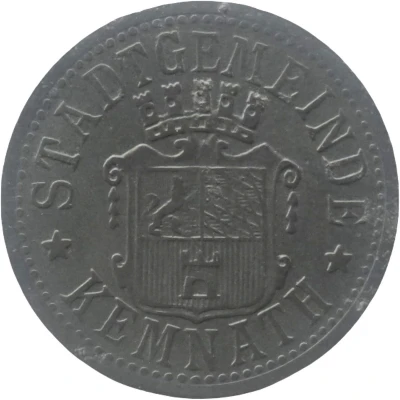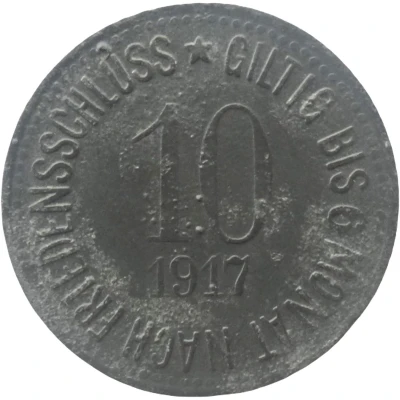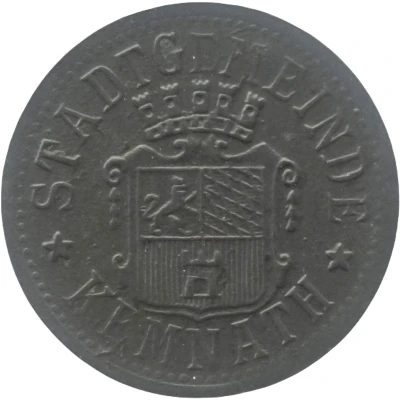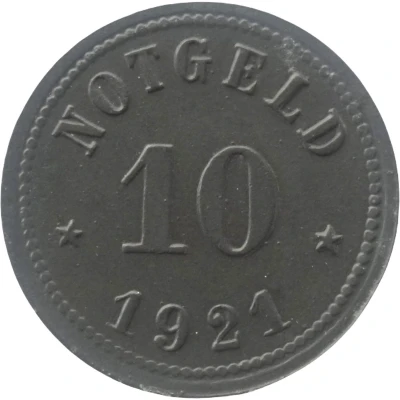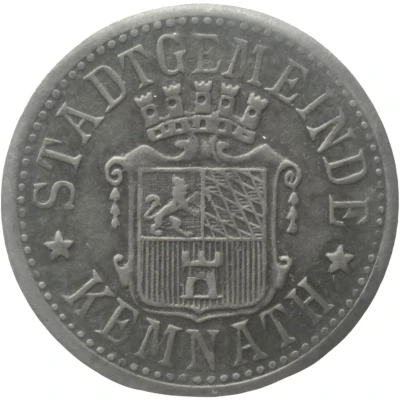
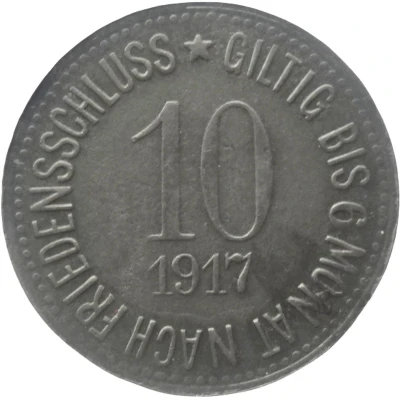

© Willem63 (CC BY-NC-SA)
10 Pfennigs - Kemnath
1917 year| Iron | 2.3 g | 20.0 mm |
| Issuer | City of Kemnath (Federal state of Bavaria) |
|---|---|
| Emperor | William II (Wilhelm II) (1888-1918) |
| Type | Standard circulation coin |
| Year | 1917 |
| Value | 10 Pfennigs (10 Pfennige) (0.10) |
| Currency | Mark (1914-1924) |
| Composition | Iron |
| Weight | 2.3 g |
| Diameter | 20.0 mm |
| Thickness | 1.1 mm |
| Shape | Round |
| Technique | Milled |
| Orientation | Medal alignment ↑↑ |
| Demonetized | Yes |
| Updated | 2024-10-04 |
| Numista | N#242018 |
|---|---|
| Rarity index | 94% |
Reverse
Pearl rim, legend surrounding denomination and date centered
Script: Latin
Lettering:
★ GILTIG BIS 6 MONAT NACH FRIEDENSSCHLUSS
10
1917
Edge
Plain
Interesting fact
The 10 Pfennigs coin from Kemnath, Bavaria, issued in 1917, is interesting because it was made of iron, a material that was commonly used for coins during World War I due to the shortage of other metals. This coin's iron composition was a departure from the usual copper or silver used in coinage, and it was one of the first coins to be made of iron in Germany. This fact highlights the impact of war on currency production and the ways in which nations have adapted to scarcity and necessity throughout history.
